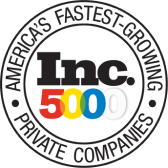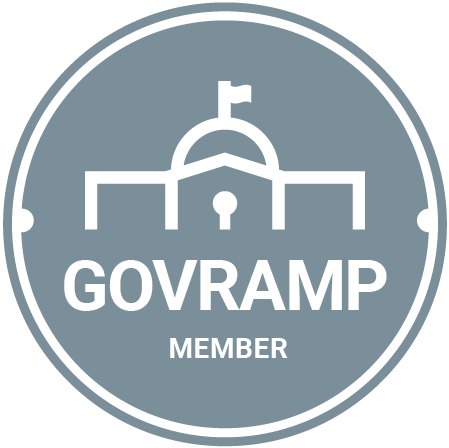In today’s fast-moving digital world, operational efficiency isn’t just a competitive advantage – it’s a survival strategy. Government agencies, enterprises, and nonprofits alike are seeking ways to deliver more value with fewer resources, streamline their processes, and build resilient systems that adapt to constant change.
Yet achieving operational efficiency remains elusive for many organizations. Fragmented systems, data trapped in silos, and the growing complexity of IT environments are constant hurdles. Leaders know what they need – better data, better decisions, and better outcomes – but often lack the tools to orchestrate these pieces seamlessly.
At Authorium, we believe that the path forward is through a unified, single-pane-of-glass approach: bringing data together, connecting systems on a single platform, and empowering teams to build agile, no-code, modular solutions that evolve with the organization’s needs.
The Challenge: Complexity and Fragmentation
Organizations today are dealing with unprecedented complexity:
- Data resides across dozens (or hundreds) of systems.
- Manual processes persist where integration is difficult.
- Legacy tools were built for siloed functions, not end-to-end visibility.
- IT departments are overwhelmed by backlog requests for basic app development.
This fragmentation creates delays, errors, and ultimately, inefficiency. Worse, it makes it nearly impossible for leadership to get a comprehensive view of operations – forcing them to make decisions based on incomplete or outdated information.
Efficiency is not just about doing the same tasks faster; it’s about reimagining how work gets done – with real-time visibility, automation, and adaptability at the core.
The Vision: A Single Pane of Glass
Imagine an environment where every operational component – data sources, applications, workflows – converges into a single, dynamic interface. Teams aren’t logging into dozens of different systems or relying on static reports; instead, they interact with live, actionable intelligence from across the organization.
This is the single pane of glass vision.
At Authorium, we built our platform specifically to realize this vision. Here’s how we break down the challenge:
1. Collect: Gather Data Across Systems and Silos
The first step to operational efficiency is visibility. You can’t optimize what you can’t see.
Authorium uses APIs to enable seamless data collection across structured and unstructured sources – CRM systems, ERP platforms, spreadsheets, cloud databases, legacy applications, and more. With pre-built connectors and flexible ingestion pipelines, organizations can rapidly pull disparate data into one platform without months of painful integrations.
By centralizing information, leaders gain a holistic view of their operational landscape – identifying bottlenecks, risks, and opportunities in real time.
2. Connect: Build a Unified Operational Platform
Data collection alone isn’t enough. The power lies in connecting that data into meaningful, cross-functional workflows.
Authorium’s platform acts as a connective tissue across your organization’s processes. Rather than operating in isolated workflows, teams can link activities, approvals, and communications – from procurement to finance to program delivery – within a unified environment.
Integration doesn’t have to mean complex coding or expensive custom builds. Authorium provides the flexibility to stitch together diverse processes, leveraging APIs, connectors, and native integrations – all managed within one governance framework.
The result: Less swivel-chair work, fewer handoff errors, and faster cycle times.
3. Create: Build No-Code, Modular Solutions
Once data is collected and connected, organizations need to take action – rapidly and flexibly.
Traditional app development cycles are too slow and resource-heavy to keep pace with operational demands. Authorium solves this through a no-code, modular solution builder that empowers non-technical users (the people who most know what needs to be done) to create workflows, forms, dashboards, and even entire applications without writing a single line of code.
- Need a new procurement approval flow? Drag, drop, and deploy.
- Want a real-time budget monitoring dashboard? Build it in hours, not months.
- Discover a new compliance requirement? Modify your solution with a few clicks.
Modules are built to be reusable and composable, meaning teams can quickly adapt and update solutions as requirements change – without costly rework or new system builds.
This flexibility ensures that operational efficiency isn’t a one-time achievement, but an ongoing capability.
Why This Matters Now
The pressure to operate efficiently is only intensifying. Economic constraints, public expectations, and technology innovation cycles demand that organizations do more with less – and faster than ever before.
Authorium’s approach delivers measurable impacts:
- Faster time to insight: Real-time dashboards and connected data eliminate the lag between activity and action.
- Lower IT costs: No-code development reduces the burden on IT teams, freeing them to focus on high-value initiatives.
- Greater agility: Modular solutions mean organizations can pivot quickly as conditions change.
- Improved compliance and governance: Centralized data and workflows ensure better auditability and control.
Ultimately, operational efficiency isn’t just about optimizing existing processes – it’s about empowering organizations to reinvent how they deliver value.
A New Era of Operations
Organizations that embrace a single-pane-of-glass vision will lead the next era of operational excellence. They will be faster, smarter, and more resilient – able to deliver better outcomes to their stakeholders while optimizing the use of every resource.
At Authorium, we are proud to be building the platform that makes this vision a reality. By enabling organizations to collect, connect, and create with ease, we help unlock a future where operational efficiency is not a dream, but a daily reality.
The future of operations is unified, modular, and agile.
It’s time to make that future your present.



